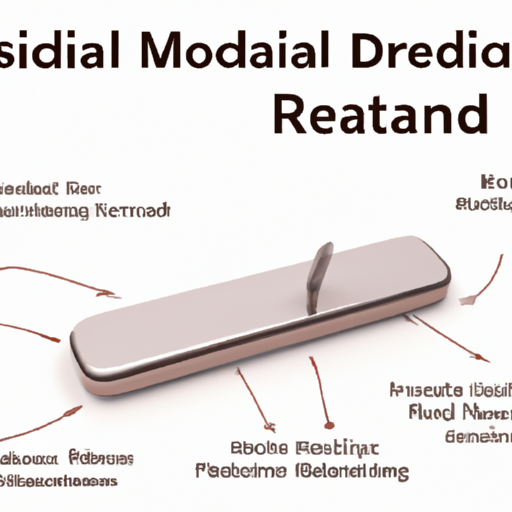Title: Mainstream Models of RF FDA: A Comprehensive Overview

1. Time Division Multiple Access (TDMA) (200 words) Time Division Multiple Access (TDMA) is one of the most widely used models of RF FDA. In TDMA, the available frequency band is divided into time slots, and each user is allocated a specific time slot for transmission. This model ensures that users do not interfere with each other, as they transmit during their designated time slots. TDMA offers several advantages, including efficient spectrum utilization, low complexity, and flexibility in accommodating varying data rates. It is commonly used in cellular networks, satellite communications, and wireless local area networks (WLANs).
2. Frequency Division Multiple Access (FDMA) (200 words) Frequency Division Multiple Access (FDMA) is another mainstream model of RF FDA. In FDMA, the available frequency band is divided into multiple sub-bands, and each user is allocated a specific sub-band for transmission. This model allows multiple users to simultaneously transmit at different frequencies, ensuring that they do not interfere with each other. FDMA offers advantages such as simplicity, robustness against interference, and compatibility with existing analog systems. It is commonly used in analog cellular networks and satellite communications.
3. Code Division Multiple Access (CDMA) (250 words) Code Division Multiple Access (CDMA) is a widely adopted model of RF FDA that utilizes unique codes to differentiate between users. In CDMA, all users share the same frequency band simultaneously, but each user is assigned a unique code. The transmitted signals are spread using these codes, and the receiver can extract the desired signal by correlating it with the corresponding code. CDMA offers advantages such as increased capacity, improved security, and resistance to interference. It is extensively used in modern cellular networks, including 3G, 4G, and 5G.
4. Orthogonal Frequency Division Multiple Access (OFDMA) (250 words) Orthogonal Frequency Division Multiple Access (OFDMA) is a popular model of RF FDA that utilizes orthogonal sub-carriers to enable simultaneous transmission by multiple users. In OFDMA, the available frequency band is divided into multiple orthogonal sub-carriers, and each user is allocated a subset of these sub-carriers for transmission. This model provides high spectral efficiency, robustness against frequency-selective fading, and flexibility in accommodating varying data rates. OFDMA is widely used in modern wireless communication systems, including Wi-Fi, WiMAX, and Long-Term Evolution (LTE).
Conclusion (100 words) RF FDA plays a crucial role in enabling efficient utilization of the radio spectrum, allowing multiple users to share the same frequency band simultaneously. In this article, we explored the mainstream models of RF FDA, including TDMA, FDMA, CDMA, and OFDMA. Each model offers unique advantages and finds applications in various wireless communication systems. As technology continues to evolve, further advancements in RF FDA models are expected, enabling even more efficient and reliable wireless communication networks.
Title: Mainstream Models of RF FDA: A Comprehensive Overview

1. Time Division Multiple Access (TDMA) (200 words) Time Division Multiple Access (TDMA) is one of the most widely used models of RF FDA. In TDMA, the available frequency band is divided into time slots, and each user is allocated a specific time slot for transmission. This model ensures that users do not interfere with each other, as they transmit during their designated time slots. TDMA offers several advantages, including efficient spectrum utilization, low complexity, and flexibility in accommodating varying data rates. It is commonly used in cellular networks, satellite communications, and wireless local area networks (WLANs).
2. Frequency Division Multiple Access (FDMA) (200 words) Frequency Division Multiple Access (FDMA) is another mainstream model of RF FDA. In FDMA, the available frequency band is divided into multiple sub-bands, and each user is allocated a specific sub-band for transmission. This model allows multiple users to simultaneously transmit at different frequencies, ensuring that they do not interfere with each other. FDMA offers advantages such as simplicity, robustness against interference, and compatibility with existing analog systems. It is commonly used in analog cellular networks and satellite communications.
3. Code Division Multiple Access (CDMA) (250 words) Code Division Multiple Access (CDMA) is a widely adopted model of RF FDA that utilizes unique codes to differentiate between users. In CDMA, all users share the same frequency band simultaneously, but each user is assigned a unique code. The transmitted signals are spread using these codes, and the receiver can extract the desired signal by correlating it with the corresponding code. CDMA offers advantages such as increased capacity, improved security, and resistance to interference. It is extensively used in modern cellular networks, including 3G, 4G, and 5G.
4. Orthogonal Frequency Division Multiple Access (OFDMA) (250 words) Orthogonal Frequency Division Multiple Access (OFDMA) is a popular model of RF FDA that utilizes orthogonal sub-carriers to enable simultaneous transmission by multiple users. In OFDMA, the available frequency band is divided into multiple orthogonal sub-carriers, and each user is allocated a subset of these sub-carriers for transmission. This model provides high spectral efficiency, robustness against frequency-selective fading, and flexibility in accommodating varying data rates. OFDMA is widely used in modern wireless communication systems, including Wi-Fi, WiMAX, and Long-Term Evolution (LTE).
Conclusion (100 words) RF FDA plays a crucial role in enabling efficient utilization of the radio spectrum, allowing multiple users to share the same frequency band simultaneously. In this article, we explored the mainstream models of RF FDA, including TDMA, FDMA, CDMA, and OFDMA. Each model offers unique advantages and finds applications in various wireless communication systems. As technology continues to evolve, further advancements in RF FDA models are expected, enabling even more efficient and reliable wireless communication networks.












